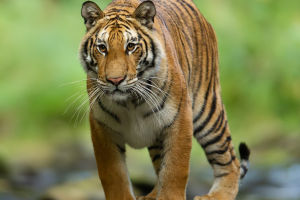Structure of Cat Hair
Cat hair, though often just seen as a layer of fluff, is a complex and fascinating structure. It plays a crucial role in a cat's life, from providing insulation to protecting the skin, and even aiding in communication.
Understanding the structure of cat hair can offer insights into the health and grooming needs of your feline friend.
Anatomy of Cat Hair
1. The Hair Shaft
The hair shaft is the visible part of the hair that extends above the skin's surface. It is composed of three main layers:
Cuticle: This is the outermost layer of the hair shaft, consisting of overlapping cells that form a protective barrier. The cuticle's scales help to repel dirt and water, keeping the hair clean and smooth.
Cortex: Beneath the cuticle lies the cortex, the thickest part of the hair. This layer is made up of keratin, a protein that provides strength and elasticity to the hair. The cortex is also where the hair's pigment, or color, is found, determining the shade of your cat's fur.
Medulla: At the core of the hair shaft is the medulla, a central, often hollow core that can vary in size and presence. The medulla is more prominent in some types of hair than others and can contribute to the insulation properties of the hair.
2. The Hair Follicle
The hair follicle is the structure embedded in the cat's skin where the hair grows. Each hair follicle is a small tube-like structure that anchors the hair to the skin and provides the necessary nutrients for its growth.
Root Sheath: The root sheath surrounds the hair follicle and helps guide the growing hair to the skin's surface. It also plays a role in the formation of new hairs during the shedding cycle.
Bulb: At the follicle's base is the hair bulb, where hair growth begins. The bulb contains living cells that divide and produce the hair shaft. As these cells move upward, they harden and form the hair's structure.
Papilla: The papilla is a small, nipple-like structure located at the very bottom of the hair follicle. It contains blood vessels that supply nutrients to the growing hair. The size and shape of the papilla can influence the type and texture of the hair.
Types of Cat Hair
Cats typically have three types of hair, each serving a different purpose:
Guard Hairs: These are the longer, coarser hairs that form the outer layer of the cat's coat. Guard hairs protect the softer undercoat and skin from the elements and are primarily responsible for the cat's overall coloration.
Down Hairs: Also known as undercoat hairs, these are shorter, softer, and fluffier than guard hairs. Down hairs provide insulation by trapping air close to the body, keeping the cat warm in cold weather.
Awn Hairs: These are intermediate hairs that are shorter than guard hairs but longer than down hairs. They contribute to the coat's texture and help blend the two other hair types.
How Cat Hair Reflects Health
The condition of a cat's hair can often reflect its overall health. A shiny, smooth coat typically indicates good nutrition and proper grooming, while dull, brittle, or patchy hair can indicate underlying health issues. Regular grooming helps remove loose hairs and prevent matting, ensuring the coat remains healthy and functional.
The Shedding Cycle
Cats go through regular shedding cycles where old hairs are replaced by new growth. The shedding process can be influenced by factors such as season, health, and even stress. Understanding the shedding cycle is important for managing hair loss and maintaining a clean home environment.
Cat hair is much more than just a source of endless shedding; it's a finely tuned structure designed for protection, insulation, and even communication. By understanding the anatomy and types of cat hair, you can better appreciate the needs of your feline friend and ensure their coat remains healthy and vibrant. Regular grooming and attention to your cat's hair can help detect any health issues early on, keeping your kitty comfortable and content.


